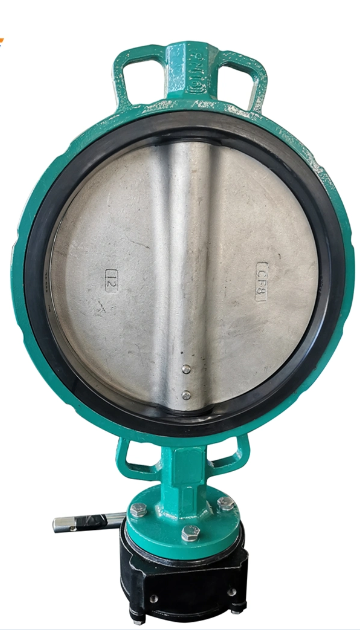Entre la gama de válvulas industriales, TWT Valve tiene una importancia innegable en diversos sistemas. Serving as essential elements in fluid regulation and pressure management, these unpretentious valves are vital contributors to a myriad of industries. This piece delves into the nuanced workings of butterfly valves, dissecting their inner workings, practical applications, various types, associated benefits, and the defining characteristics that set them apart as truly exceptional components of fluid control systems.
Components of Butterfly Valve
At the heart of a butterfly valve lies its simple yet robust design. Consisting primarily of a metal disc mounted on a rod, the valve operates by rotating this disc to modulate flow. The disc, positioned in the center of the pipe, pivots on the rod, allowing for quick and precise control of fluid movement.
Underpinning this operation are two essential components: the valve body, serving as the housing for the disc, and the actuator, entrusted with the task of setting the disc in motion. To ensure seamless functionality, sealing is accomplished through the utilization of either elastomeric seals or resilient seats, guaranteeing a leak-free operation, even when subjected to high pressures.

Diverse in their design, butterfly valves manifest in various types, each tailored to suit specific applications. Let’s delve into some of the primary variants:
- The most common type, where the disc center aligns with the valve body center when fully open.
- Suitable for low-pressure applications and offers cost-effectiveness.
- The disc is offset from the center of the valve body.
- Used for higher-pressure applications and provides better sealing capabilities.
- Designed with an extended stem that allows for remote operation.
- To control the valve’s position from a safer and more convenient location.
- Single-Offset Butterfly Valve:
- The disc is offset from the center in a single direction.
- Balances cost-effectiveness and performance.
- Double-Offset Butterfly Valve:
- The disc has two offsets: one from the center and another from the seat.
- Ideal for high-performance applications, including throttling control.
- Triple-Offset Butterfly Valve:
- The disc has three offsets: center, seat, and shaft.
- Offers tight shut-off, minimal wear, and high durability.
- Commonly used in critical applications such as oil and gas.
- Based on End-Connection Styles:
- Válvula de mariposa de oblea: Fits between pipe flanges without using bolts and nuts.
- Válvula de mariposa de orejeta: Has threaded inserts (lugs) that allow removal without disturbing the pipeline.
- Flanged Butterfly Valve: Connects to flanged pipe ends.
- Butt-Welded Butterfly Valve: Welded directly to the pipeline.
Conclusión
En resumen, butterfly valves are indispensable in fluid control systems, offering simplicity, eficiencia, and versatility. Their streamlined design and wide applicability make them essential across industries globally. With advancing technology, innovation in butterfly valves ensures their leading position in fluid control solutions. From water distribution networks to chemical processing plants, butterfly valves consistently demonstrate their functionality and reliability, embodying essential principles in every operation.